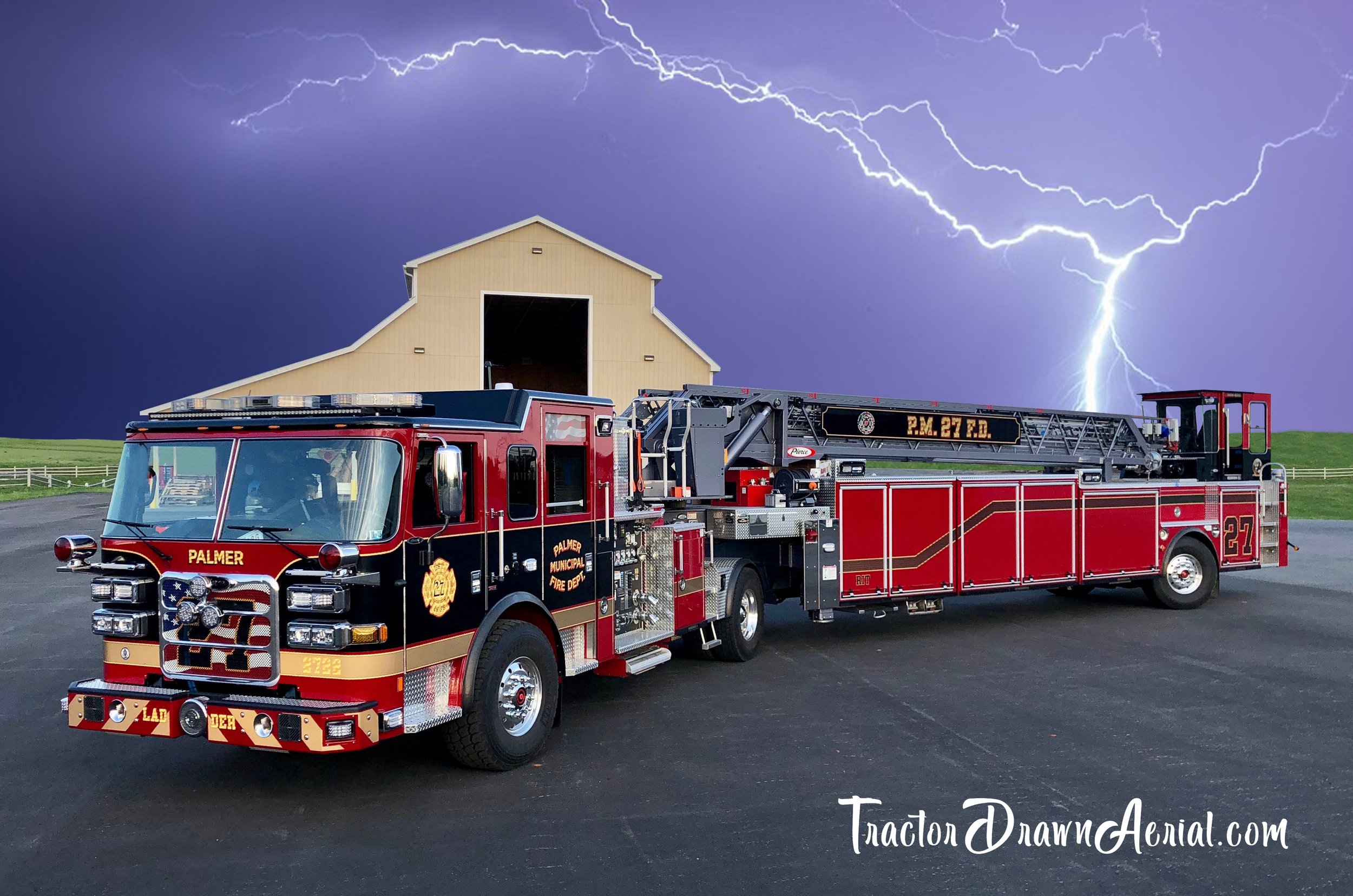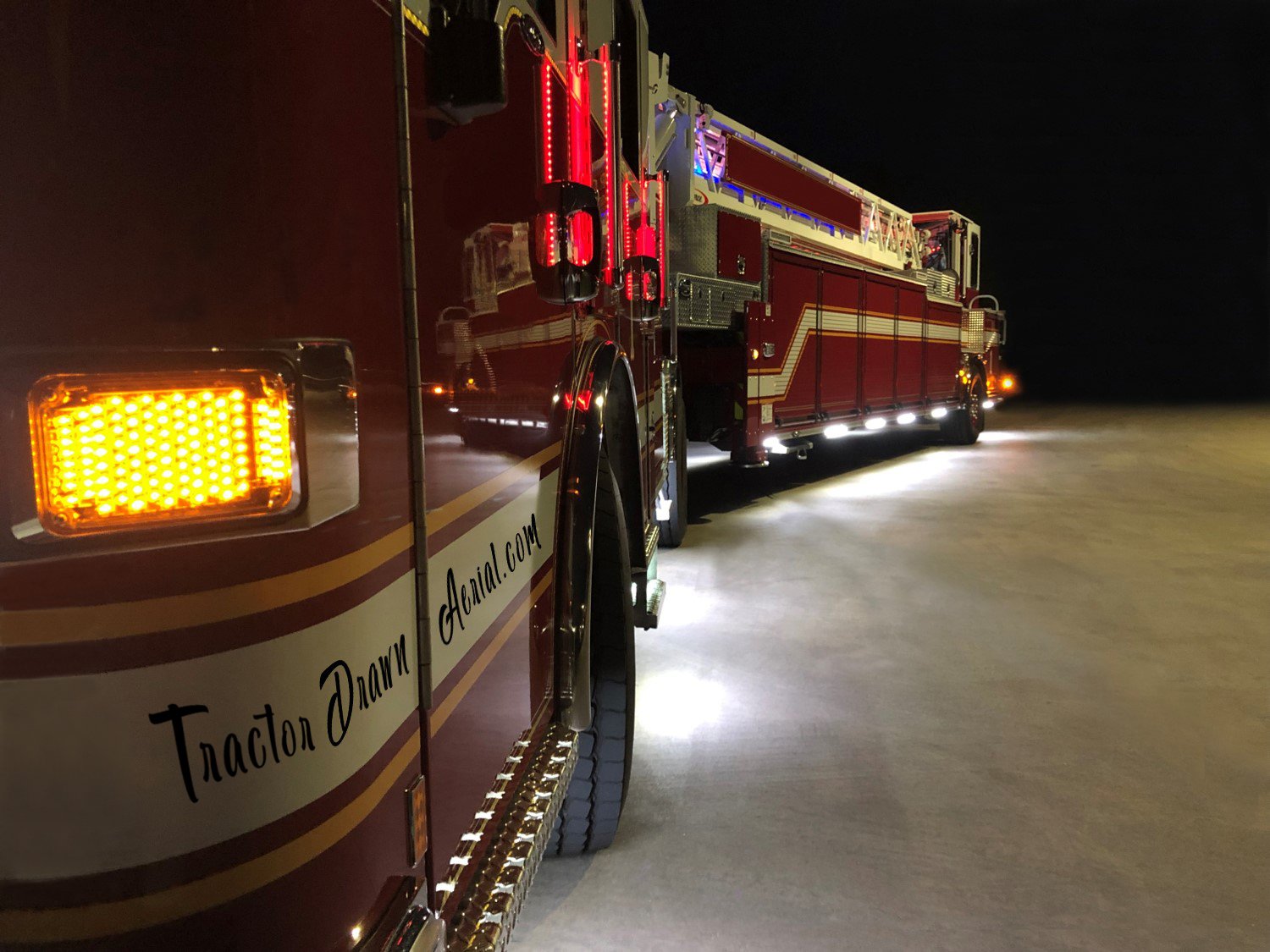backing into the fire station
Backing a tractor drawn aerial into a station is becoming a lost art in the national fire service. (See videos below) Backing any trailer can be confusing and frustrating for all but the most experienced. A tractor drawn aerial, first and foremost, is a tractor trailer which by itself can be very difficult for a driver to back. Now try backing that same apparatus while adding a second driver who can steer the trailer independently of you. With that being said, you can see how backing this type of apparatus can be an extremely challenging skill to master.
While providing training for departments around the country on how to operate tractor drawn aerials, the one skill that builds more confidence for a drivers/tiller operator is the ability to master backing a tractor drawn aerial. Nevertheless, I’ve come upon drivers who are very tentative about backing a tractor drawn aerial and when possible try never to put the apparatus in a position where it would require going in reverse. This is unfortunate because when a driver/tiller operator team are proficient at backing, it is phenomenal where this rig can go and what it can do in reverse. This type of driver does not understand that they have taken away a huge mechanical advantage that this apparatus gives them when backing.
As new stations are built, or old stations are remodeled, it’s not uncommon to see stations with drive through apparatus bays. Departments that have drive-through apparatus bays typically no longer back their apparatus into the station. And because a tractor drawn aerial is much more of a challenge to drive in reverse than an engine, it becomes the norm to no longer back into the station.
It is for these reasons that I’m a strong advocate for encouraging and fostering a culture of not using drive-through apparatus bays as the primary way to enter the station with a tractor drawn aerial.
To become proficient at backing a tractor drawn aerial requires that a driver/tiller operator team understands the principles and techniques. It will take time and experience before the team masters this skill set, but with practice and discipline this becomes possible. Not using the drive-through apparatus bays allows them to build on their skills every time they come back to the station.
For example, one of my tiller instructors is a driver of a tractor drawn aerial at a very busy fire station in Seattle. His station has drive-through apparatus bays for all the apparatus. He’s a very seasoned driver and has years of experience in driving tractor trailers. He is also extremely effective at driving and backing tractor drawn aerials. Even with all his driver experience and skill set, he chooses to back into the station 50% of the time. He recognizes the value of truly staying proficient through repetition and practice.
Backing video
Example 1:
Here is video of my driver and tiller operator backing our apparatus into the station. This backing evolution became more challenging when two SFD fire apparatus were parked on both sides of the street outside of our station. My driver had a very small amount of space to navigate between both of the fire apparatus. He also had to manage the tractor's front end swing while maintaining the appropriate push for the trailer. Notice as the tractor makes its turn, how close the front end of the tractor gets to the side of the straight frame aerial.
example 2:
This example comes from a volunteer fire department out of Newark, Delaware. Their tractor drawn aerial backs into a very small apparatus door with minimal clearance on each side. Because of the station's location and the small street, they are required to back at a 90° angle every time they back into the station. Both the driver and tiller operator must hit their marks correctly to successfully back this apparatus into the station.
This example demonstrates that the driver is backing the apparatus on what is referred to as "the drivers blind side", which increases the difficulty of this type of maneuver.
example 3:
This next example comes from the Greensburg Volunteer Fire Department in Pennsylvania. Their tractor drawn aerial operates out of a very old historic fire station with small arching apparatus bay doors. This requires them to back their apparatus into the station every time they come back. Not only is the tractor drawn aerial backing into the small space, but once it’s in the station, it must maneuver to the left because multiple fire apparatus respond out of this same apparatus door. Again this example displays backing on the drivers blind side.
These video examples highlight the skill sets of these drivers/tiller operator teams. Their competence is clearly measurable and directly translates to driving and operating a tractor drawn aerial on the fire ground. These examples demonstrate the importance of being proficient and continually practicing by backing into your station so that you can successfully maneuver in reverse out on the street.












